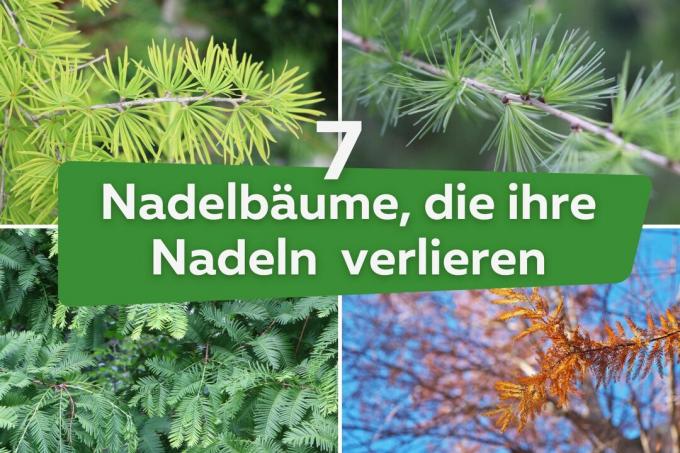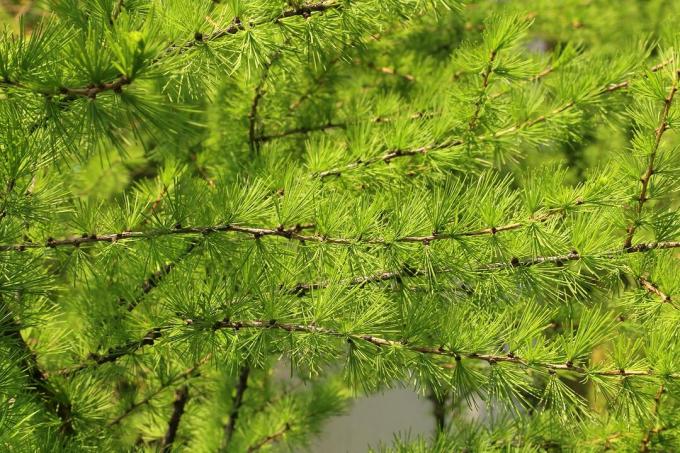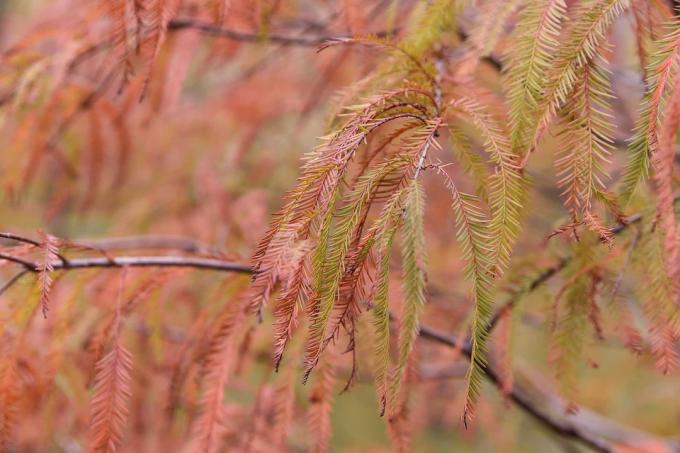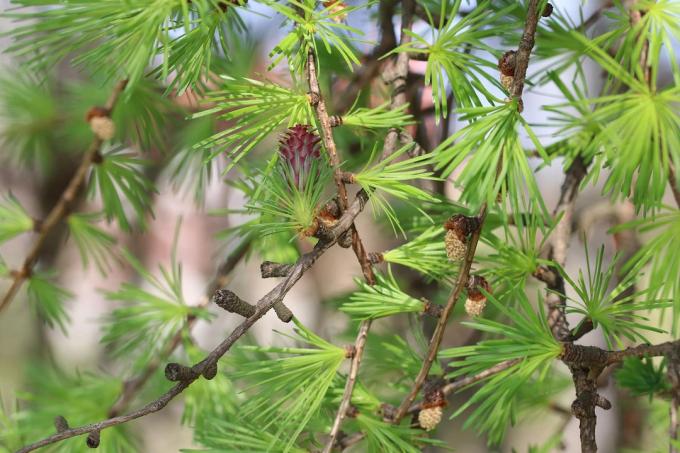
Most conifers keep their needles even in winter, they are evergreen. A few trees are exceptional and still lose their needles. Corresponding types are briefly presented here.
In a nutshell
- there are few needle-shedding conifers
- these mainly include various larch species
- usually with attractive autumn colors
- mostly resistant to drought, pests and diseases
Table of contents
- Dahurian larch
- True bald cypress
- European larch
- golden larch
- Japanese larch
- Siberian larch
- primeval sequoia
- frequently asked Questions
Dahurian larch

The Dahurian larch (Larix gmelinii) is known for its extreme frost hardiness, which surpasses all other trees. While rarely found in gardens or parks, you will wood as a building material valued.
- Size: up to 35 m
- Growth: upright, slender, columnar to conical crown, fast-growing
- Flower and fruits: flowers in May, seeds ripen in September, cones remain on the tree for a long time
- Location: Native to East Asia, relatively undemanding, tolerant of cold, heat and drought, prefers acidic and peaty soils
- Use: is mainly suitable for reforestation and wood production, also grows well in mixed cultures
True bald cypress

The bald cypress (Taxodium distichum) is named after its location. It grows well even in water, but can also cope with drier locations.
- Size: up to 40 m
- Growth: upright, squat habit, conical crown, slow growth, thick trunk that tapers sharply
- Flower and fruits: Flowers form in winter, bloom from March, forms spherical cones
- Location: as moist as possible, but it is not advisable in a pond, as this would have to be very large, loamy, moderately nutrient-rich soil, not too much sun on dry soil
- Care: Depending on the location, water if necessary, is hardy, but new shoots are endangered by late frost, so only fertilize moderately
European larch

The European larch (Larix decidua) is a native conifer. In autumn, it is particularly conspicuous in coniferous forests with its brown-yellow coloration.
- Size: up to 54 m
- Growth: single trunk with a trunk diameter of up to 2 m, expansive but not necessarily pyramidal shape
- Age: up to 600 years, rarely older
- Flower and fruits: in spring, male and female flowers on one plant, cones form the following spring, seed maturity in fall
- Location: sparse forests, preferably on mountain slopes, generally not very demanding
- Care: completely uncomplicated in the garden, tolerates drought, hardy
A notice: The cones remaining on the branches no longer contain seeds. They can remain on the branch for up to 10 years.
golden larch

The golden larch (Pseudolarix amabilis) was introduced as an ornamental tree because of its bright autumn colors.
- Size: up to 40 m in the natural location, in the garden up to 20 m
- Growth: slow-growing, conical crown, golden yellow in autumn
- Flower and fruits: flowers in May, seeds ripen from October, cones decay on the tree
- Location: comes from China, grows on moist, deep and nutrient-rich soil without lime
- Care: Mainly easy to care for, deep-rooted, tolerates drought
Japanese larch

There are now many cultivated varieties of the Japanese larch (Larix kaempferi). From small dwarf forms to corkscrew-like growing varieties.
- Size: up to 30m
- Growth: Pointed crown when young, later flattening out, reddish shoots, fast-growing when young
- Flower and fruits: flowers from March to April, rosette-like cones ripen the following year
- Location: originally from Japan, likes a sunny spot, prefers moist, yet well-drained soil
- Care: Mulch the root area when planting, keep young trees moist
Siberian larch

In its natural habitat, the Siberian larch (Larix sibirica) can live up to 500 years reach if it is not felled beforehand, because the wood of the Siberian larches is considered valuable Lumber.
- Size: up to 45 m
- Growth: fast-growing when young, remains slender, forms a pyramidal crown
- Flower and fruits: flowers in spring, seeds ripen in winter, cones remain on the tree for a long time
- Location: comes from Siberia, introduced in some countries as a forest tree, tolerates different soils and is climate-resistant, prefers open locations
- Use: important forest tree in some European countries, wood is very resistant to external influences
primeval sequoia

The primeval redwood (Metasequoia glyptostroboides) is also called Chinese redwood. This tree is also losing its needles. Before the first living specimens were found in China, this tree species was thought to be extinct.
- Size: up to 40 m
- Growth: forms a thick trunk, fast-growing, remains comparatively narrow
- Flower and fruits: flowers inconspicuously in May, cones are small, spherical and red-brown in colour
- Location: relatively undemanding, grows in the sun or semi-shade, few demands on the soil, but prefers a damp location
- Care: Keep young trees moist and fertilize to accelerate growth
A notice: There are dwarf forms of the primeval sequoia that are also suitable for small gardens. They will not be higher than 4 m.
frequently asked Questions
This is not necessary. Instead, the needles can be used along with compost or leaves as a natural layer of mulch. Most conifers like slightly acidic soil, the rotting of their own needles acidifies the soil.
Basically, the conifers that shed their needles in the fall are not as vulnerable as the trees that keep their needles. This has to do with the fact that they observe a true hibernation. In addition, they are often more drought tolerant and therefore not as attractive to pests.
A cut is not necessary for a growth that is as natural as possible. However, the conifers then need a lot of space, as they sometimes reach a growth width of up to 15 m in diameter. However, conifers that lose their needles in the fall can be pruned back as needed. It is only important to ensure that you do not cut back too far into the old wood.

